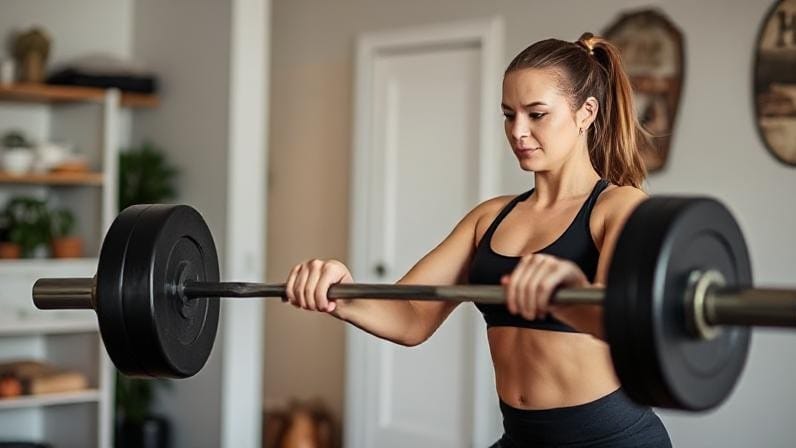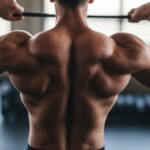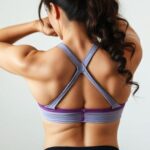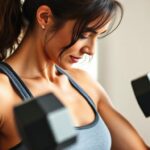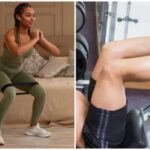Skip the gym, not the gains. These 7 powerful at-home barbell exercises will sculpt muscle, improve strength, and save you time.
In this fast-paced era, the indolent gym buff surely cannot make gains. In the world of busy executives, stay-at-home parents, and those simple pleasure seekers, home barbell workouts offer a cost-effective means for building serious muscle. The secret ingredient? Heavy, centered compound movements pumping through every major muscle: all you need is a barbell, a few plates, and the right form.
This guide contains 7 ultimate transformations using

barbell training for your body that do not require fancy machines or memberships. Let the lifting begin.
Why Barbell Training Works (Even at Home)
Before we delve into the exercises, here are reasons why barbell training at home is trending and indeed works:
Compound exercises mean maximum activation of muscles
The strength and effectiveness of barbell exercises, such as squats and deadlifts, work on multiple groups of muscles at the same time.
It readily supports progressive overload
It is easier to increase the load gradually and measure strength gains using barbells.
Minimal equipment yet maximum returns
A barbell and plates are all you need to hit every major muscle group.
Freedom,⇒and Consistency
No commuting. No waiting in line for machines or for equipment. Just consistent
Now, we will discuss the seven best barbell workouts to build muscles sans the gym.
1. Barbell Back Squat – The Money Leg Day Workout
Target muscles: Quads, hamstrings, glutes, and core
Equipment needed: Power rack or squat stands (optional)
How to perform:
The barbell rests on your upper traps (never on the neck).
Keep feet shoulder-width apart.
Brace your core and squat until your thighs are parallel to the ground.
Drive through your heels to return back to the standing position.
Pro tip: Don’t cave in your knees; feel as if you are spreading the floor apart with your feet.
Why it’s important:
Squats are the bedrock of lower-body strength, core stability, and hormone release (testosterone and HGH, as examples); it’s a must for muscle building.
2. Barbell Deadlift – Full-Body Power Move
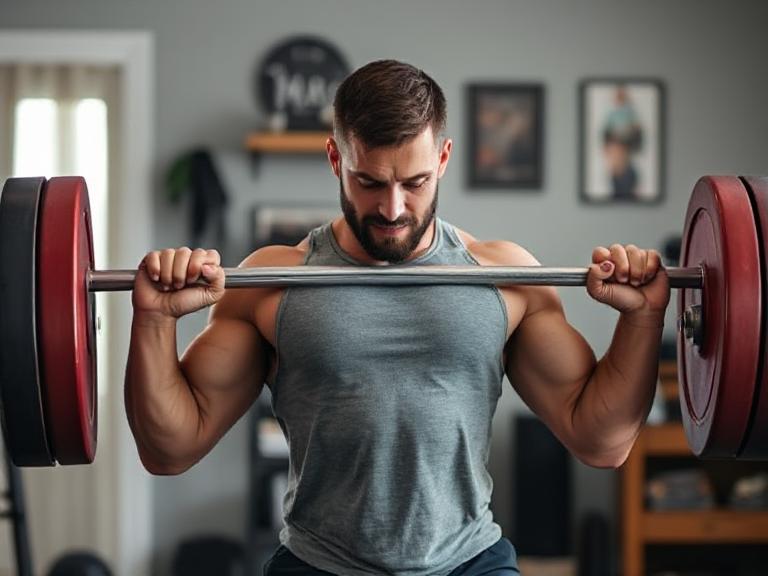
Target muscles: Glutes, hamstrings, lower back, traps, core
How to perform:
Stand there with the heels hip-width apart, while the bar rests over midfoot.
Hinge at the hip joints and grab the bar outside of your legs.
Maintain a neutral spine and keep the chest up.
Through the heels, stand tall and squeeze your glutes very tightly at the top.
Pro tip: Never round your back- ‘chest proud, butt back.’
Why it’s important:
The deadlift employs almost every muscle in the body and allows for improvements in posture, grip strength, and general power. Training with this must be a part of any serious lifting regimen, and they are thoroughly possible to do in your home.
3. Barbell Bench Press (Floor Press Alternative) – Push Strength Without a Bench
Muscles targeted: Chest, shoulders, triceps
How to do (floor press):
Lie on the floor with the barbell held straight over your chest.
Lower the bar till your triceps touch the floor.
Press the bar back up until your arms are straight.
Pro tip: Keep your elbows at a 45-degree angle to lessen the strain on your shoulders.
Why it’s important:
No fancy bench is needed; the version targets similar muscles of the upper body, adding a bit more safety in the absence of a spotter.
4. Barbell Bent-Over Row – Strengthen a Thicker Back
Muscles targeted: Lats, rhomboids, traps, rear deltoids
How to do:
Hold the bar with an overhand grip; bend forward at the hips till your torso is about 45°.
Row the bar up to your belly button.
Squeeze shoulder blades together, then lower with control.
Pro tip: Do not jerk the weight since controlling it is what builds strength,
why this is important
For creating a well-balanced physique, rows are key—and even more so if you’re pressing a lot (as with push-ups or bench pressing). Additionally, a more developed back aids in posture.
5. Barbell Overhead Press (Standing) – Shoulder and Core Incinerator
How to do:
Primary muscles worked: Deltoids, triceps, upper chest, core
How to Register & Act Read more about us on the blog.
Grip the bar with a shoulder-width grip and hold it at collarbone height.
With the Press, continue pushing upwards until the arms are completely straight.
Further reduction with guardrails.
Pro tip: To prevent yourself from arching your back, make sure to keep your core tight and glutes engaged the entire time.
Why is this important
The overhead press might be the most effective upper-body exercise you’ve never tried. It’s a core crusher. Second, it’s a real-world functional strength test.
6. Barbell hip thrust (floor setup) – glute growth powerhouse
How to do:
Target muscles: Glutes, hamstrings, core
How to register and attend
Sit on the floor and recline your upper back on a tough couch or container.
Roll the bar across your hips (pad the bar).
Drive through your heels and squeeze your glutes to lift your hips so that your torso and thighs form a straight line at the top.
Squeeze glutes, lower to land feet shoulder-width apart.
Pro tip: Don’t arch your back — power through the hips.
Why it’s important
So if you’re aiming for stronger, rounder glutes, hip thrusts are non-negotiable, and as they’re really easy to do at home with just a few pieces of home gym equipment, they’re super convenient.
7. Barbell Curl-to-Press Combo – Arm & Shoulder Finisher
Muscles worked: Biceps, shoulders, traps
How to register to attend.
You can begin with the simple barbell curl.
As you get to the top, switch to an overhead press.
Reduce beneath management and rinse and repeat.
Pro tip — Don’t go too heavy on the uprights — you’re not trying to impress anyone. It’s about form over ego.
Why it’s important to support
This killer combo move will give you an awesome pump and work several different upper-body muscle groups together in one fluid sequence. It is perfect as a finisher or burnout set.
Bonus Tips for Getting the Most Out of Muscle at Home
1. Invest in a good-quality barbell and plates
Opt for Olympic standard bars (20kg/45lbs bars) and adjustable plates, so you have the flexibility to increase the intensity of your workouts as you progress.
2. Have a daily and class-by-class routine
Input graphite pairwise splits into county pairs. Use splits such as:
Day 1: Legs + Core
Day 2: Full body
Day 3: Lower body
Day 4: Recovery
Day 5: Total body
Day 5 was another day of rest.
Imagine going to college and having a lab period filled with people dressed in lab coats who barely speak English.
3. Keep a log of your progressive overload
Write down your project weights, reps and sets. Try to up the load or number of repetitions each week.
4. Warm up & cool down
Always warm up each session with 5-10 minutes of light cardio and/or dynamic mobility. Cool down with stretching or foam rolling to prevent injury.
5. Tip – Avoid ego lifting and prioritize your form
Bad technique = career-ending injury.
Perfect practice = progress in leaps and bounds.
Create Your Barbell Home Lifting Kingdom
No high-end gym membership or complicated machines required—these strength-building moves will help you shed pounds while defining muscle. With a strategic approach and some proper flooring, barbell training at home is the greatest fitness hack you’ll ever add to your life.
FAQs
1: Is it possible to build muscle at home with a barbell only?
Heck yes. So long as you’re keeping up with progressive overload and solid nutrition, a barbell on its own can be all you need to build some serious muscle.
2: How many days a week do I need to lift?
3-4 sessions per week are perfect for the average person. For building muscle, rest days are equally as important as lifting days.
3: What if I don’t have a squat rack?
Teach using floor-based barbell lifts, or clean-and-press methods to get the bar up into position for front squats or overhead carries/movements.
4: Should I use protein powders and other supplements?
Not by a long shot. Focusing on achieving 1.6–2.2g protein per kg of BW from whole foods, supplementing only if necessary.
5: Are at-home barbell workouts for beginners?
Yes, beginners can and should use barbells, but start light and prove to yourself that you can stamp on perfect form first. Start with the fundamentals, practice in front of a mirror or with video to observe your form, and progress in weight slowly.
6: Is barbell training better than bodyweight workouts?
Each approach has its advantages. Bodyweight workouts will improve your endurance and flexibility, and you’ll be able to build strength and muscle mass more quickly with barbell workouts thanks to something called progressive overload.
